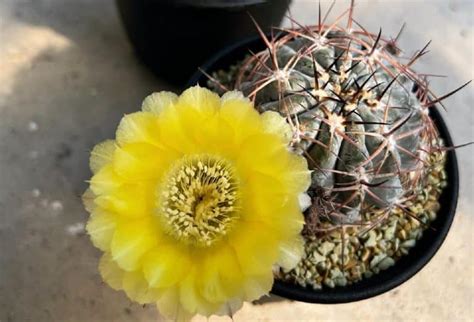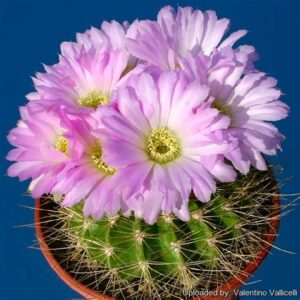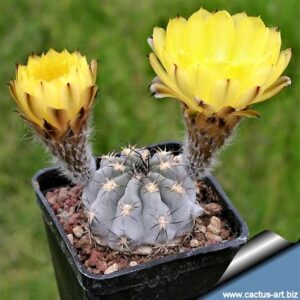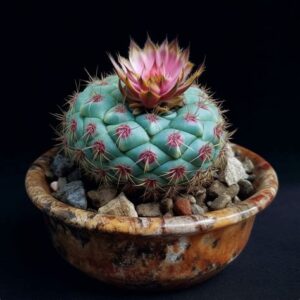Acanthocalycium glaucum rubriflorum is a captivating species that enchants cactus enthusiasts with its striking appearance and resilient nature. Its spherical shape is similar to a robust emerald orb, primarily adorned with bold, red flowers that burst forth like fireworks against a green canvas. Caring for this unique cactus requires a blend of knowledge, intuition, and a touch of artistry. In this exploration of its care, we will delve into essential tips and tricks to ensure your Acanthocalycium thrives like a sun-kissed gem in the desert.
To appreciate the beauty of Acanthocalycium glaucum rubriflorum, one must first understand its native habitat. Indigenous to the arid landscapes of Argentina, this succulent is adapted to endure extremes. The environment is unforgiving, where temperatures fluctuate and water is a rarity. Such resilience is mirrored in the care requirements for its cultivation outside its native realm.
Each step in the care regimen contributes to the holistic well-being of this extraordinary specimen. From ensuring adequate sunlight exposure to maintaining optimal soil conditions, the journey is much like nurturing an intricate work of art. Here, we will explore the essential aspects of Acanthocalycium gluacum rubriflorum care, and how to cultivate and maintain its health as you would a delicate masterpiece.
Light: The Sun’s Embrace
Light is the lifeblood of succulents, and Acanthocalycium glaucum rubriflorum is no exception. This cactus thrives in a setting where it can bask in bright, direct sunlight for most of the day. Its vibrant, reddish blooms are known to unfurl only when it receives the sun’s warm embrace. Too little light, however, can lead to etiolation—an elongation of the cactus in a desperate attempt to reach the light. This phenomenon distorts its plump, spherical form and diminishes its aesthetic appeal.
For optimal growth, aim for at least six to eight hours of direct sunlight daily. A south-facing window is often ideal; however, if outdoor cultivation is possible, a location that receives morning sunlight with some afternoon shade can be beneficial in hotter climates. It is important to gradually acclimate your cactus to higher light levels to prevent sunburn, which manifests as bleached patches on the skin.
Water: The Balanced Oasis
Watering Acanthocalycium glaucum rubriflorum requires a delicate touch akin to an artist poised with a brush. Overwatering is a grievous error that may lead to root rot, while underwatering can cause the cactus to wither. The guiding principle is simple: water infrequently but deeply.
During the growing season, typically spring and summer, water your cactus thoroughly when the soil has dried out completely. This may mean watering every two weeks or so, depending on your environment and humidity levels. As autumn approaches and the cactus enters dormancy, reduce frequency to once a month or even less. Always ensure that excess water has a place to escape, as Acanthocalycium glaucum rubriflorum is not equipped to thrive in soggy conditions.
When watering, allow the water to seep into the soil, saturating it, yet without creating a bog. The desired result is a refreshed cactus, its skin plump with stored moisture, ready to face any arid challenge.
Soil: The Foundation of Success
Just as the foundation of a building must be sturdy and reliable, so too must the soil for Acanthocalycium glaucum rubriflorum be well-draining. A cactus soil mix, which combines potting soil, sand, and perlite or pumice, will ensure that the roots do not languish in moisture. This mix allows for adequate air circulation and promotes healthy root development.
Containers play an essential role in this equation; pots with drainage holes are non-negotiable. Terracotta pots are particularly favorable, as they can absorb excess moisture and help regulate soil wetness. When transplanting your cactus, be gentle. It is wise to repot every couple of years or when root bound, providing fresh soil and an appropriately sized container to encourage growth.
Temperature and Humidity: The Goldilocks Zone
Acanthocalycium glaucum rubriflorum originates from a region characterized by fluctuating temperatures. While it can withstand heat, it also requires a cool period. The ideal ambient temperature for this succulent ranges from 70°F to 90°F (21°C to 32°C) during the day, and ideally, nighttime temperatures should drop to around 50°F (10°C) in autumn and winter. This fluctuation mimics its natural environment and encourages the blooming cycle.
Humidity levels should remain relatively low, as high humidity can lead to fungal issues and rot. As such, maintaining a dry atmosphere can be beneficial, particularly during the winter months when lower light levels and an increase in moisture in the air can spell trouble for your cactus. In regions with higher humidity, ensure proper air circulation and consider using a fan to prevent stagnation.
Pest Management: Vigilant Guardianship
Caring for Acanthocalycium glaucum rubriflorum also involves an element of vigilance. Despite their robust disposition, succulents can fall prey to pests like mealybugs, aphids, and spider mites. Inspect your cactus regularly to catch any infestations early. If found, a mixture of water and mild soap can be effective in treating the unwelcome guests. Alternatively, a cotton swab dipped in alcohol can be employed to target mealybugs specifically.
Preventative measures are also vital. Ensuring proper care can help bolster the plant’s defenses and deter pests from establishing a foothold. Isolation of newly acquired plants until they have been observed for signs of pests is a prudent practice that can save considerable heartache down the line.
Exotic Blooms: The Cloverleaf’s Gift
The enchanting blooms of Acanthocalycium glaucum rubriflorum are one of its most alluring features. The vibrant red flowers burst forth in exuberance, often creating a captivating spectacle against the enchanting backdrop of the green cactus body. To promote blooming, ensure that the plant receives adequate light and a brief period of dormancy during the cooler months. This dormancy is akin to the quiet before a spring festival, where anticipation builds until the vibrant outpouring of flowers occurs.
When your plant blooms, celebrate this moment of beauty. Consider the blooms as fleeting art and embrace the ephemeral nature of life itself. After flowering, snip away any spent blooms to maintain the plant’s aesthetic appeal and encourage healthier subsequent growth.
Conclusion: A Plant to Cherish
Caring for Acanthocalycium glaucum rubriflorum is a journey filled with learning and appreciation. This cactus, embodying resilience and beauty, mirrors the delicate balance of nature’s artistry. By providing appropriate light, water, soil, and attention, you can cultivate a breathtaking specimen that flourishes through the seasons. In nurturing this striking succulent, you not only enrich your environment but also embrace a living testament to the wonders of botanical diversity.





Leave a Comment